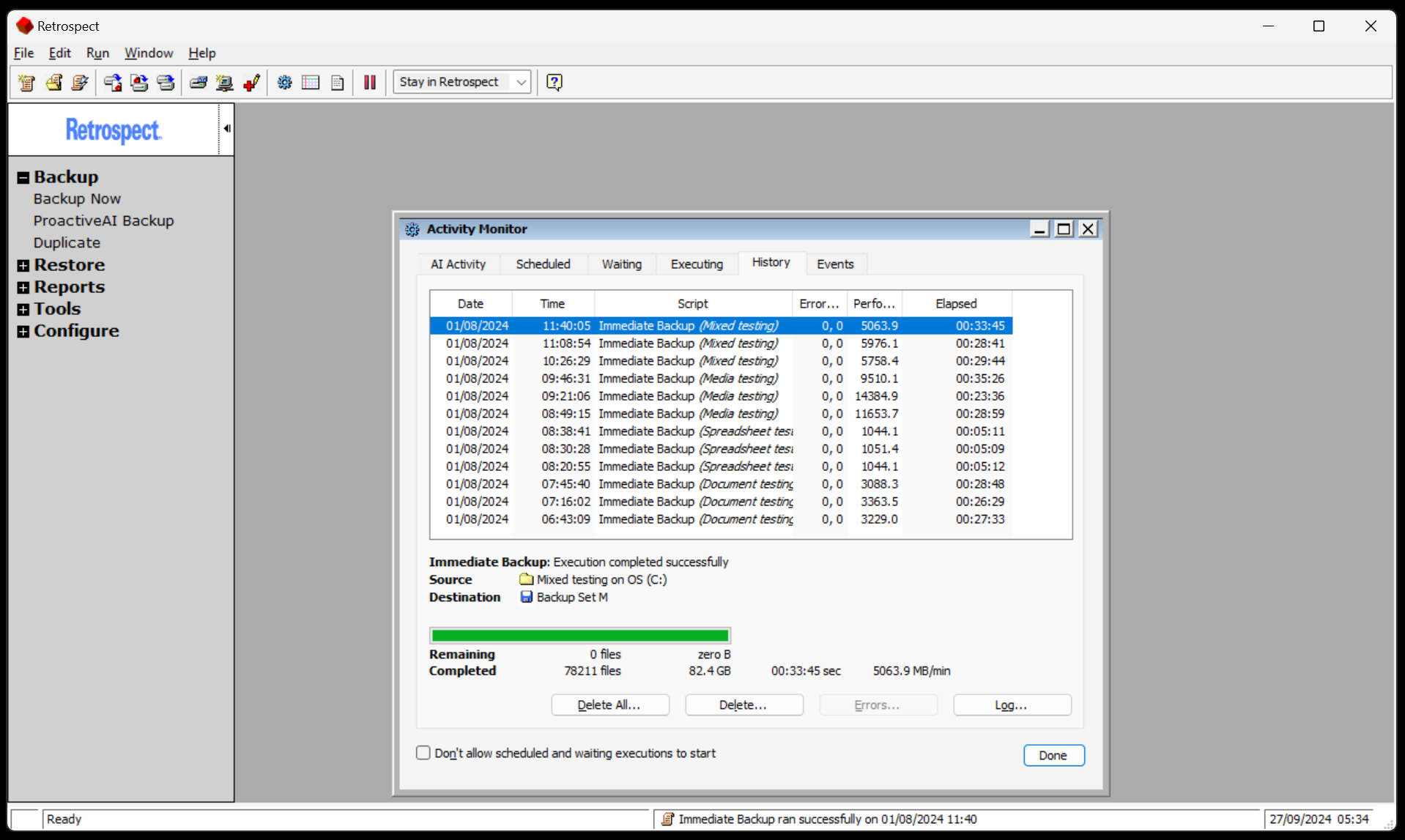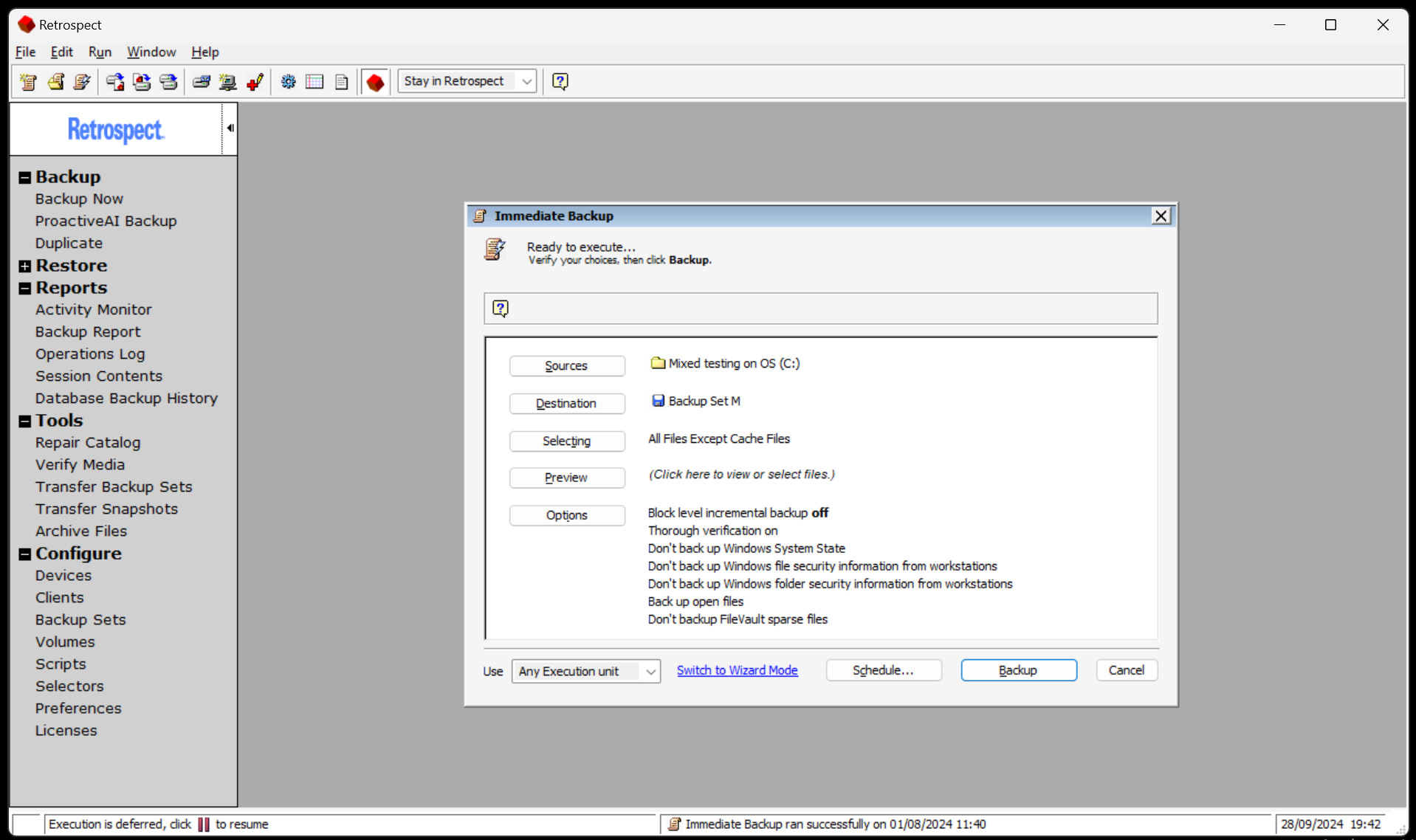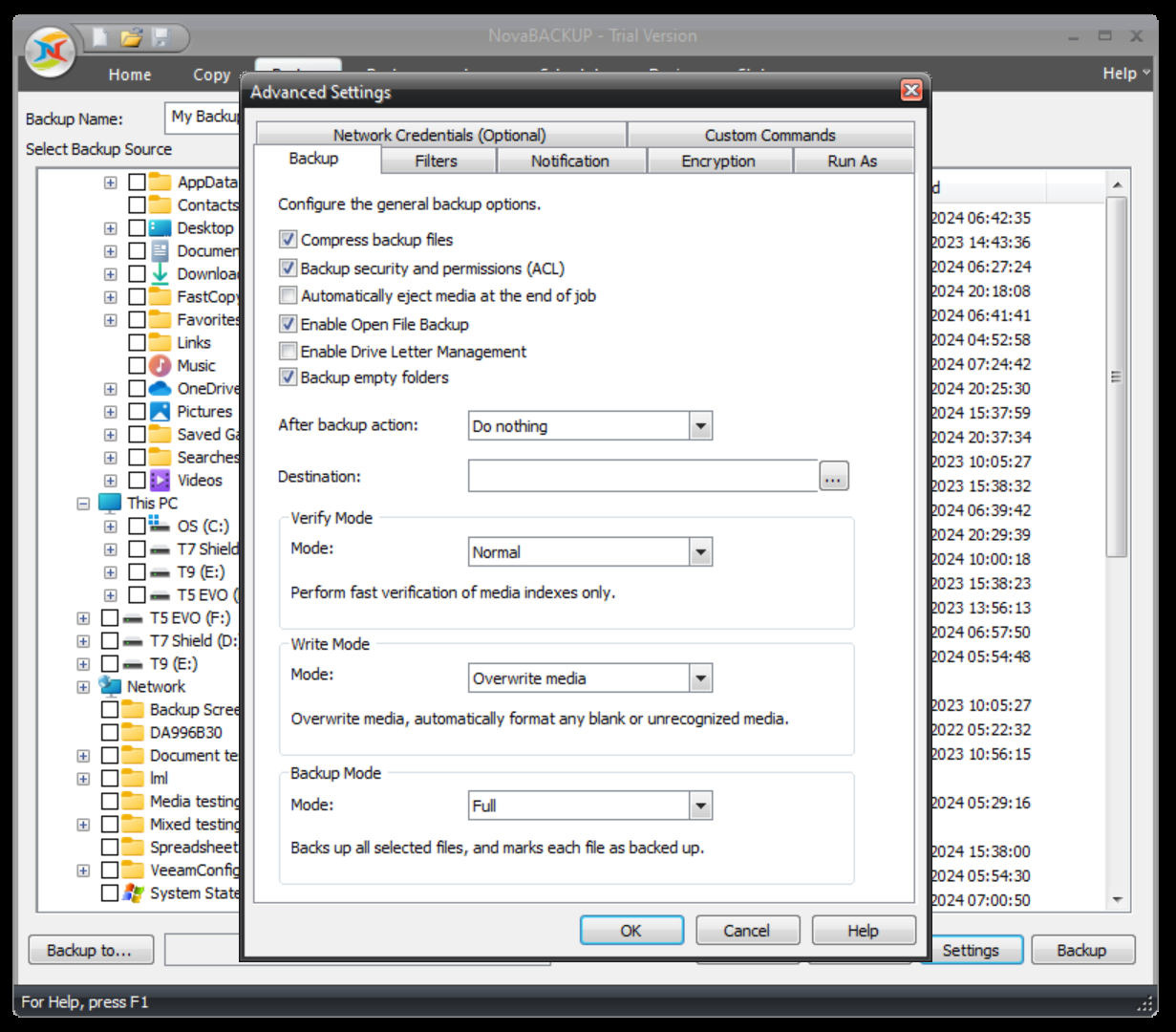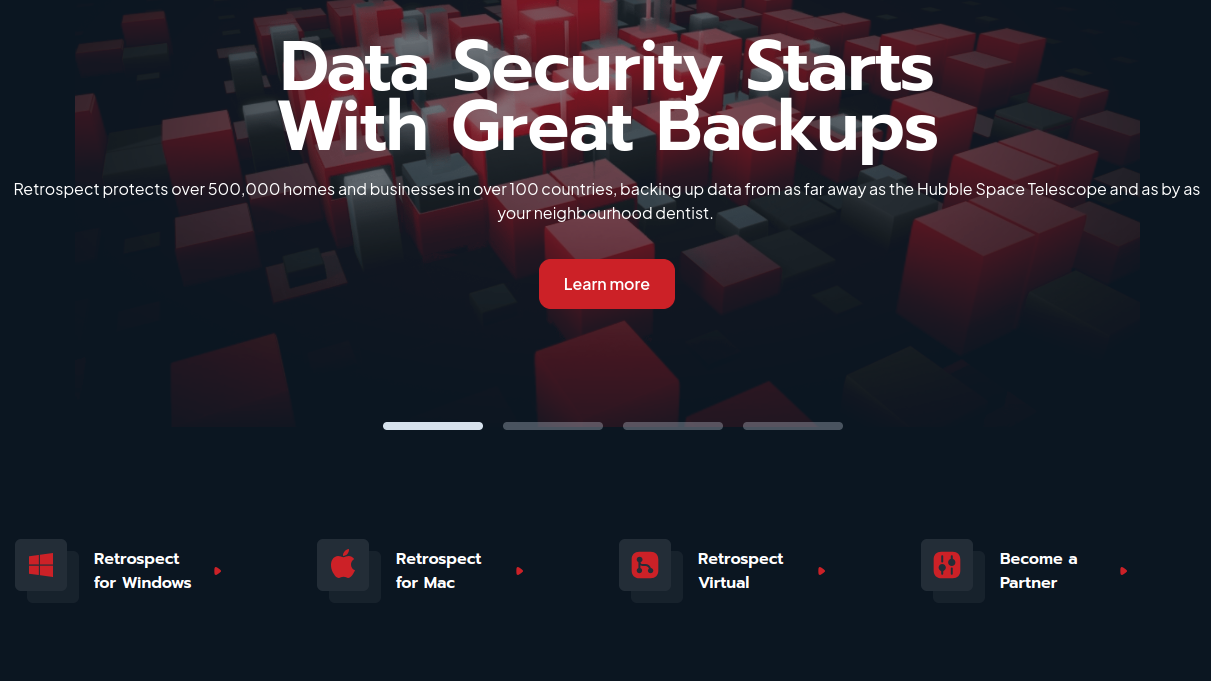TechRadar Verdict
Packed with flexibility and cloud support, but not the fastest or most modern tool
Pros
- +
Great cloud capabilities
- +
Extensive support options
- +
Flexible payments and packages
Cons
- -
Not particularly fast
- -
Old-fashioned interface
- -
Can become expensive
Why you can trust TechRadar
Retrospect Solo is one of the relatively rare backup software tools available on both Windows and Mac. As the name suggests, this product is designed for individual systems rather than organisational use. For business, Retrospect is an ideal option for sole traders or small companies that need to protect individual PCs.
It’s certainly not your only choice if that’s what you need, though, with individual products from EaseUS and Macrium leading the charge when it comes to individual system protection.
We've also highlighted the best disk cloning software right now.
Retrospect Solo: Plans and pricing
Retrospect Solo for Windows costs $49 for a lifetime licence, with that price rising to $129 if you want a year of email and phone support and maintenance included. The Mac version mirrors those prices.
Those standalone figures are a mixed bag: that lifetime licence is cheaper than either equivalent EaseUS or Macrium option, but Retrospect’s one-year support and maintenance upgrade, called ASM, makes the product more expensive.
Retrospect is also available in several different versions. The Desktop product covers five systems and prices start at $116 for a lifetime licence and $159 for a premium version, or from $10 per month if you buy a subscription. Server options rise in price accordingly.
The product can be customized with add-ons to support additional servers, PCs and email accounts.
If you’re in business and want to protect individual systems, though, the Desktop product looks like the best value – that lifetime subscription might be more expensive than the Solo product, but it protects five systems and so is capable of handling your business by adding some extra PCs.

Features
If you want to stick with Solo, though, then don’t worry – you’re still getting a good set of features.
It handles full, incremental and differential backups. You can preserve entire drives, entire PCs, computers on your network and your documents and settings, and you can specify if you only want to backup pictures, music, movie files or documents – handy if you're going to preserve a particular type of file.
In terms of backup destinations, you can choose from removable drives, local drives, and cloud storage, with support included for more than twenty cloud providers, including Amazon S3, Dropbox, Google Cloud Storage, Microsoft Azure, and more. There’s also support here for NAS systems from Synology, QNAP and others. That’s impressive because lots of backup apps include limited cloud support, and it’s especially useful in a business setting.
Once you’ve configured your settings there’s a one-click backup option if you want to use them again, and a wizard guides users through the entire process.
You can schedule backups for specific days of the week, repeating intervals or a single date – a reasonable selection although you will find more scheduling ability elsewhere. Delve into the backup options and you can opt for verification, data compression, anomaly detection and more, with a broad array of options available for anyone who wants to delve into some trickier menus.
Elsewhere there are extensive restoration options, a file-finding option, disaster recovery and an option to recover mailboxes from backups. The reporting is particularly extensive. There are additional modules for repairing backups, verifying media and transferring your backups to other destinations.
Combine these options together and you’ve got a powerful backup tool. You can protect and migrate your online mailboxes between providers, use the cloud for extra protection, write scripts for specific tasks, and secure your backups with encryption and multi-factor authentication.
Switch over to the Mac version and you’ll find similar features. Retrospect on Apple’s platform supports complete data protection, cloud backup, email protection, scripting, anomaly checking and most of the other features that make Retrospect Solo such a fully-featured product for individual systems.

Interface & Use
Retrospect Solo might be packed with features, but the core application is not attractive – it looks old-fashioned and intimidating, at least initially.
Many of the icons are tiny and not labelled; it’s sometimes hard to find the options you need, and you’ll have to delve through nests of menus to find your way.
There are two saving graces: the presence of some helpful wizards to guide newer users through common processes, like setting up backups, and an app called Retrospect Dashboard that presents key information, like scheduled backups, recent tasks and storage capacities, in a friendlier visual format.
Still, the main app is not particularly accessible, particularly to those who don’t know their way around software.
We tested our latest slate of backup apps with a 42GB document folder, a 2.5GB spreadsheet folder, a 162GB folder of media and an 82GB file that mixes all of those file types. We backed them up to three different SSDs to weed out any inconsistency.
Retrospect proved itself a mediocre performer in our tests. Its best result came with our folder of spreadsheets, where it took five minutes and ten seconds to back up the files – but the best apps we’ve tested, including EaseUS and O&O DiskImage, took two and three minutes respectively.
Retrospect took twenty-seven minutes to back up our folder of documents, twenty-three minutes when handling media, and thirty minutes with a mixed folder. The Mac version returned similar results.
When it comes to speed, this is a mediocre app, and if pace is a priority, you’ll want to look elsewhere.
Support

Instead of taking the lead in the results tables, NovaBACKUP makes a big deal of its support offering – and rightly so.
You can submit support tickets, call a phone line that’s open between 9 am and 5 pm, and consult an extensive knowledge base. You can schedule appointments with the support team, dive into a forum, watch webinars, and get setup assistance depending on the product you’ve purchased.
Competition
EaseUS’s app is much faster than Retrospect in every category, and single-PC versions of apps from Macrium, Paragon and O&O are faster, too.
So if you’re chasing speed and those options are available at comparable prices – and they often are – they’re all going to be better options. For the most part they’ve got more up-to-date interfaces, too.
That said, Retrospect fights back in other areas. Its cloud options are virtually unmatched, for instance, and its range of add-ons adds flexibility, admittedly for an extra price. And when it comes to core backup options, it has a good range of features once you get beyond the interface.
Verdict
Retrospect is an intriguing app that will successfully serve the needs of many home users and small businesses.
Positively, it has good core features, excellent cloud ability and great support, so if you need an app for cloud backup this should be at the top of your list.
Negatively, though, it’s not particularly fast and it suffers with an ageing interface, so it’s not the best option for anyone who needs speed or a beginner who may need more signposting in the interface.
If you’re aware of those foibles, though, then Retrospect could still do the job for lots of people – especially if you want to use the cloud for your backup.
Mike has worked as a technology journalist for more than a decade and has written for most of the UK’s big technology titles alongside numerous global outlets. He loves PCs, laptops and any new hardware, and covers everything from the latest business trends to high-end gaming gear.
